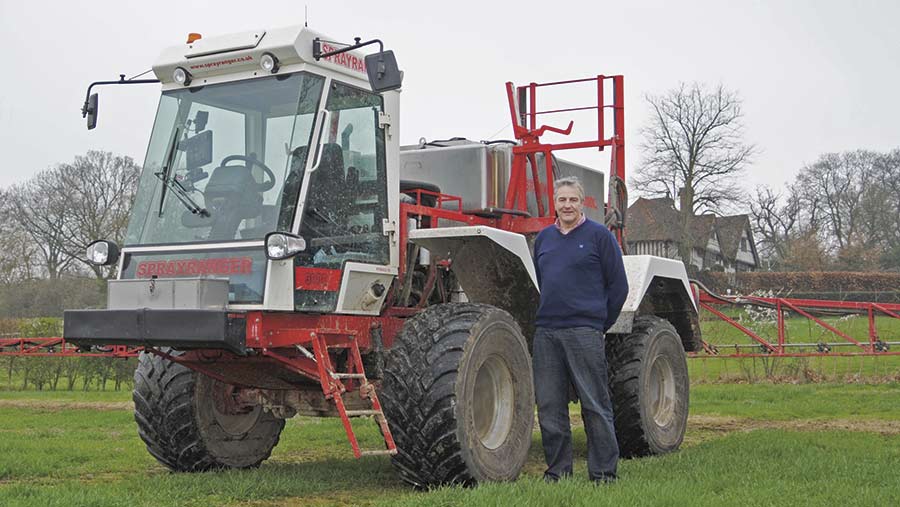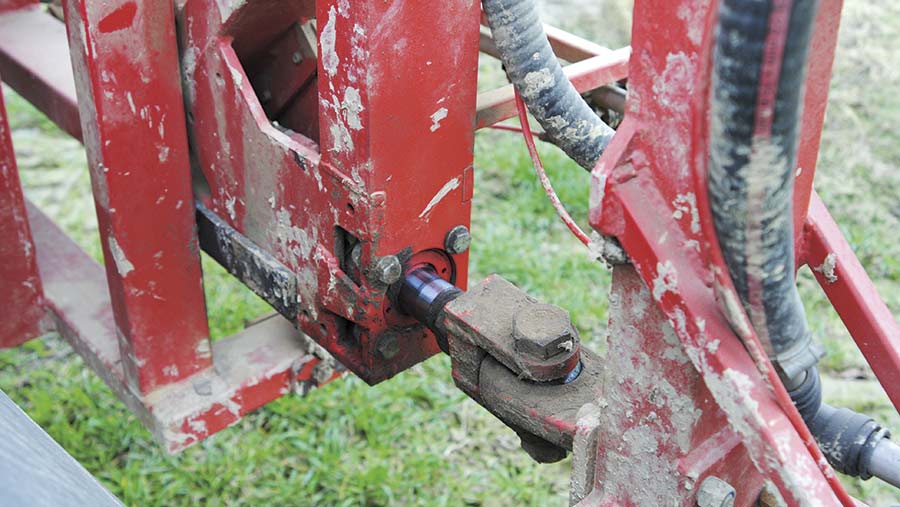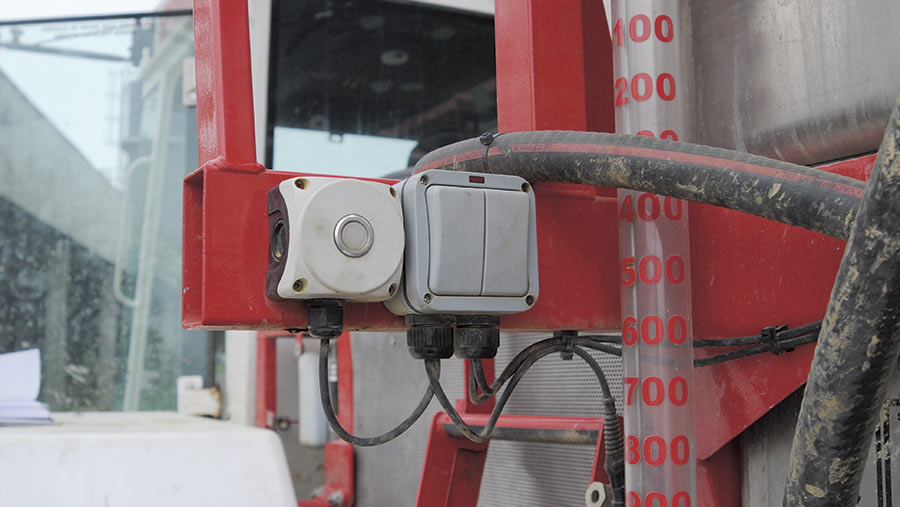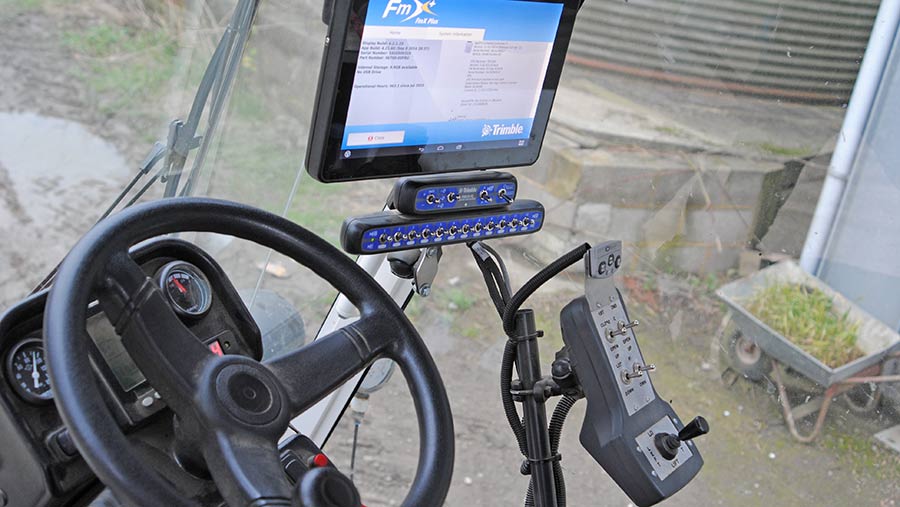Driver’s view: Kent farmer rates his Alanco Sprayranger
 © Edd Mowbray
© Edd Mowbray Since its heyday in the 1980s, the light and nimble low-ground-pressure sprayer has been gradually phased out In favour of bigger, higher-capacity alternatives.
But for many operators across the country, the importance of skipping daintily across soggy soils is still more important than covering vast acreages to a fill.
For those in the market for one of these machines, there’s sadly not a lot of choice.
A few hydrostatic makers build a lighter-weight machine, but for those that want a traditional mechanical drive, there are only three that fit the bill: Kellands’ Agribuggy, Bargam’s Grimpeur and Alanco’s Sprayranger. And we’ve recently been informed the latter has stopped taking orders for new machines.
See also: Derbyshire contractor rates Kellands Agribuggy A280
Each of these can carry at least 2,500 litres of chemical and sit well under the 10t mark when fully laden. That’s quite a difference when compared with some of the largest self-propelled machines on the market that nudge the 13t mark without a drop of liquid on board.
To find out how each of these mechanical-drive machines has been fairing on farm we catch up with three operators that have been running their machines for two years. In the third of this series we take a look at the Alanco Sprayranger.
Alanco Sprayranger
With Alanco manufacturing its machines a stone’s throw from Will Thompson’s arable farming operation, Braffle Farm Partnership in Staplehurst, Kent, when it came to upgrading there was only one brand in mind. He now runs a Sprayranger 300D with a 3,000-litre tank and 24m booms.
Why did you buy a low-ground pressure sprayer?
The soil structure on the land we farm doesn’t lend itself to the larger, heavy self-propelled machines. We previously used a contractor to do the spraying and they used to sink in with the sprayer and leave huge ruts in the wet.
During the 1990s we drilled with a combination drill and it didn’t do any favours to the soil structure. Four years ago we bought a Sumo DTS strip-till drill, with a primary aim to cut down on passes, improve soil make-up and keep the tramlines in the same place.
We farm some small areas with average field size being around 5ha, so a nimbler machine is required. We also run a small Bateman RB25 to assist during the busy periods – we prefer to run two smaller, lighter machines rather than one heavy monster.
What made you pick the Alanco Sprayranger?
This is the fifth Alanco machine I have owned and I have always liked their simplicity. Another huge plus point is the machines are manufactured five minutes away in Marden, meaning the back-up has always been second to none.
The earlier models suffered with overheating issues, but Alanco rectified this with an upgrade core placed in the radiator. Since then we have been trouble free.
I enjoy the mechanical drive of the sprayer and don’t particularly like the hydrostatic transmission on the road. A brake pedal is a comfort on the small lanes we negotiate around here.

© Edd Mowbray
What spec did you go for?
We plumped for the 300D 24metre, 3,000-litre model. The engine is 3.2 Ford five-cylinder lump that goes in the Transit and it is more than man enough to cope with the sprayer. We have the steel geo booms but they don’t have auto-levelling.
Most of the time I’m barely above tick-over when spraying. We have some undulating land and steep hills and it doesn’t ever get phased by what is put it front of it.
We have Trimble fitted on our Challenger MT765, both sprayers and a Fastrac 4220, which drives the fertiliser spreader. The Sprayranger also runs a 2050 screen, which has a faster processor than the previous model. Auto steer and auto shut-off from the 12, 2m sections are controlled by the Trimble Field IQ set-up.
How has it performed so far?
Very well. We have covered 1,100 hours since we purchased the machine and are impressed with the engine’s low down torque
It’s lightweight but sturdy in the headland turns and I can loop round noticeably quicker in the Alanco than my colleague can with the Bateman.
Any breakdowns?
We had a major problem recently when spraying. I starting to hear a clunking noise, which I thought was from the engine, so I rang Alanco and limped it back to the yard.
It was diagnosed as a cracked bolt hole in the flexi-plate between the engine and the transmission, with a small bit of metal flying around the bell housing causing the racket. Alanco’s service was excellent and we were back up and running within 24 hours.
Thankfully, the transmission is British built, which means we can get hold of parts quickly.
Other than that, there has been little wrong with it since we took ownership in 2015.

© Edd Mowbray
Best and worst features?
One feature that wasn’t on my previous Sprayranger 250D, is a pre-set rev button next to the induction hopper. This means I can have the pump on tick-over if I have a lot of chemical to wind in, or running on the pre-set level, all controlled without accessing the cab.
The last few machines have had air-bag suspension, which makes for a comfortable ride and the recirculation of the booms is a major advancement from earlier models.
Alanco hasn’t spent millions on a futuristic cab design, which could put some buyers off. Ideally, it could be bigger and more refined, but it does everything it needs and I can still get tools and lunch bag stashed away for a day’s work.
What would you change?
One thing Alanco could change to gain extra height clearance is switching to a drop-leg axle design, this has been thought about in the past but the weight of the axle has hampered any progress.
The current Hommer industries units are standard fodder and the height clearance isn’t great for spraying off oil seed rape, even with the 300/85 R42 row crops on.
The Bateman we own has track-width adjustment and this would be a nice feature, but not essential for the work we do.
We should really look at having a set of intermediate tyres with agricultural tread, our turf-like flotation tyres provide a smooth ride but lack sideway grip in the winter.

© Edd Mowbray
Would you buy another?
I would, although there would have to be a sizeable improvement in cab refinement to bring it closer to the more mainstream manufacturers. Some better sound insulation wouldn’t go a miss either.
Apart from this, the running gear and sprayer pack are excellent and I much prefer the mechanical drive to the hydrostatic alternatives.
I traded in my previous Sprayranger after five years’ graft and only had a difference of £40,000 to pay for my current model, which was a very decent return.
Alanco’s future
Alanco is a small-scale manufacturer that was producing around half-a-dozen machines a year. The decision was taken to cease production of new machines but indefinitely support those with existing models.
This was driven by the requirement for the current engine to meet emission regulations, which would have prompted a full redesign.
This also coincided with the retirement of the owner. Also, all new engines available on the market were not powerful enough or weighed too much, getting away from the core values and appeal of the sprayer.

